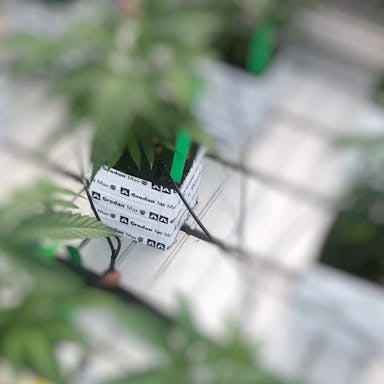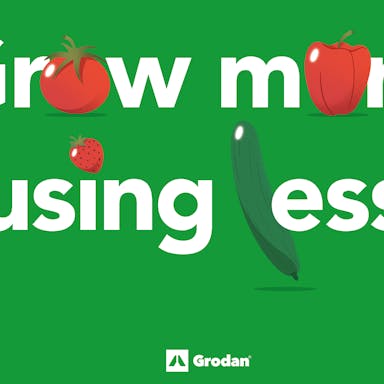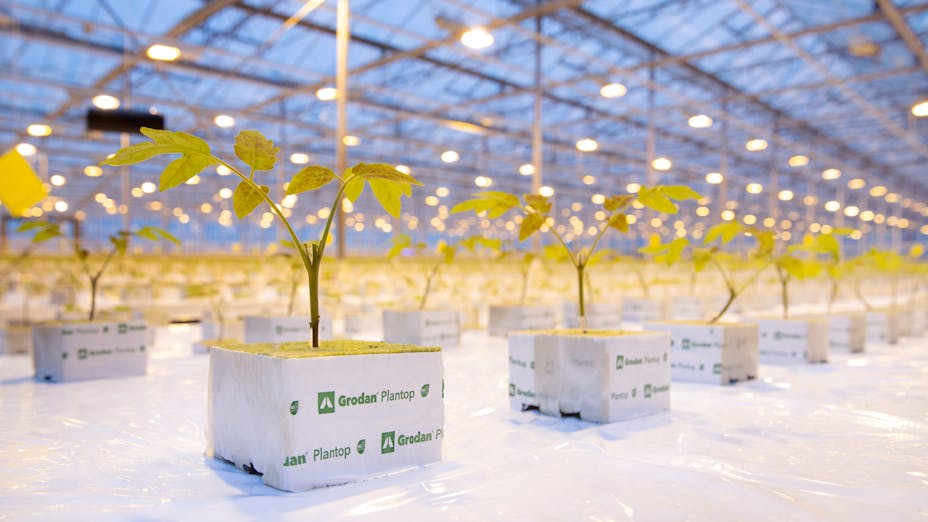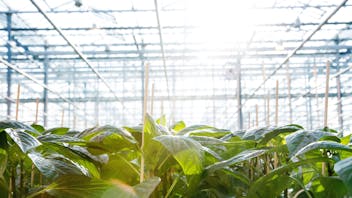Appropriate irrigation strategy
Although the crop is already at a final stage of production, the irrigation strategy at this time of the year is very important. In order to maintain the condition of plants, the quality of the root system must be ensured. For this reason, the irrigation strategy must be modified, especially in the morning.
On sunny and warm days, the frequency of irrigation and midday doses can remain at the same level as in summer (irrigation corresponding to sun exposure), but watering must be carried out sparingly later in the morning. Also, watering should be ended earlier.
Before the first irrigation cycle, it is very important for moisture to drop in the slabs and reach values of 2-2.5% between sunrise and the first cycle. The overnight water depletion (ΔWC) can already reach values of more than 10%. In order to properly satisfy the plants’ requirements and to have the first overflow cycle occur at the right time (the aim being to maintain the correct EC of the growing medium), the first irrigation cycles should be long enough to provide a minimum of 300-400 ml/m2.
In the afternoon, irrigation must be based on solar radiation to avoid excessive watering (flooding of slabs and excessive overflow). Controlling the overflow of individual cycles allows watering strategy to be more precise.
With an excessive overflow, the time between cycles should be gradually increased, and after that the cycle length can be reduced, if necessary To finish irrigation, it is necessary take into account the planned overnight drop in WC, e.g. down to 12%. In autumn, it is normal to finish irrigation four to five hours before sunset.
Slabs moisture control (WC) guidance
- Before the first cycle, the drop in the WC value of the slab as of sunrise must be at least 1.5 – 2.0%;
- The overnight moisture drop ΔWC should now be: 8 – 10% for cucumbers, and 12 – 15% for tomatoes;
- The overnight drop ΔWC will be accurate when the water content of the medium has decreased by 4% in the first 3 hours since it was last irrigated;
- When the overnight drop in the slab moisture (WC) is greater than the increase in moisture the following day, the slab is getting dried;
- Adjust the overflow level to the radiation level (table 1).
| Current radiation level (W/m2)
| Total daily radiation (J/cm2)
| Daily overflow rate (%)
|
| 200
| 500
| 5
|
| 400
| 1000
| 10
|
| 600
| 1500
| 15
|
| 800
| 2000
| 20
|
| 1000
| 2500
| 25
|
Table 1. Indicative values a daily overflow level (%), depending on the intensity of sunlight (W/m2) and total radiation (J/cm2)
Guidelines for controlling the EC level of the slab
- Overflow should occur about 2 hours after the start of irrigation and after the 3rd cycle;
- If irrigation is started later, higher irrigation doses should be used, i.e. 4-6% of the slab volume/m2;
- Higher EC values should be adopted in order to maintain crop balance after heads cutting phase, and to maintain fruit quality in the case of plants at the final stage of cultivation (table 2).
| Light intensity Level EC (W/m2)
| level EC
|
| Tomato
| Cucumber
|
| 200
| 8
| 5
|
| 400
| 6
| 4
|
| 600
| 5
| 3.5
|
| 800
| 4
| 3.2
|
| 1000
| 3.8
| 3
|
Table 2. EC values of the slab in relation to the highest daily light intensity level (W/m2)








